Sorted by date Results 1 - 11 of 11

An interesting tale of a mineral that has shaped human progress for over a millennium, from alchemy to modern industry. Mysterious, enduring, and occasionally deadly, few elements have woven themselves into the tapestry of human history quite like antimony. Revered for its alchemical potential and wielding a double-edged role as both poison and remedy, this versatile element found its way into everything from ancient makeup and medicine to early batteries and, ultimately, a... Full story

For those in the know, Alaska's resources aren't just some surprise windfall for renewable energy technologies. While precious metals like gold and silver have been the primary focus of more than a century of mining up north, the 49th State is home to 49 of the 50 materials on the United States' critical minerals list and has a history of stepping up to the plate to provide America with critical minerals when they are needed the most. Looking ahead over the next two to three...
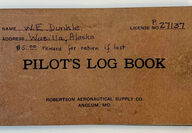
As we honor tradition and significant achievement toward mining, mineral exploration, or all-around trailblazing in Alaska, there are many individuals who have been immortalized through the Alaska Mining Hall of Fame. Among these legends is Wesley Earl Dunkle, whose impacts on Last Frontier aviation are as memorable as his mining exploits and possibly even more strongly felt today. In 2006, Charles Hawley chronicled Dunkle's high-flying Alaska exploits in a book titled...
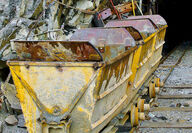
Roughly a 90-minute drive from Anchorage, it can be easy to miss Willow as one makes their way northbound. The view of Denali on the horizon, perhaps a visit to the Princess Lodge or a journey to Fairbanks. Even many lifelong residents may miss it for the more scenic destinations such as Talkeetna, yet the short blip that is Willow used to mean a lot more than buying fireworks. From 201 residents at the start of the new millennia to 190 in 2020, not much has changed in the... Full story
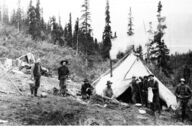
"During the two decades preceding and those following World War I, when the United States produced more than half the world's copper, the mines at Kennecott, Alaska were among the nation's largest, and contained the last of the great high grade copper ore deposits discovered in the American West. Just as mining technology was gearing up to exploit the low-grade ores that remained in the West, the Kennecott mines exposed an ore deposit of quality unequaled anywhere in the... Full story
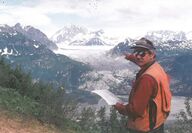
Throughout the relatively short modern history of Alaska, many nameless and oft unrecognized explorers have contributed to the Last Frontier state in ways that future generations will never be able to truly appreciate. This, however, is not the case for Bill Ellis, an explorer and geologist who has gifted his knowledge and experience for nearly half a century and personifies the attitude needed to succeed in mineral exploration, optimism. As if by providence, Bill was born in... Full story
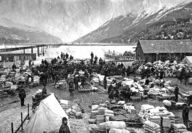
If one were to stand in the dense, silent coastal forest at the head of the Taiya Inlet today, it would be nearly impossible to imagine that 123 years prior, this Southeast Alaska locale was home to Dyea, one of the most meteoric boomtowns in North American history. Transforming from the timeless presence of nature to a bustling city and then back again over the span of a few years, for a brief moment of history Dyea offered gold-hungry pioneers a final taste of civilization... Full story
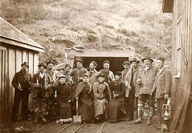
After the United States' purchase of Alaska, and before the boom brought on by the Klondike Gold Rush, a small island just off the Alaska Peninsula would have gold-bearing quartz discovered, inevitably booming a small trade hub known as Delarov, or as it came to be known, Unga. As it stretches like a broken bridge from the continent of North America to the continent of Asia, many forget the large chain of islands that occupies an area of 6,821 square miles and extends nearly... Full story
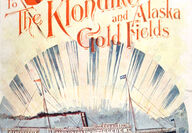
"Less than a year after the formal transfer of Alaska from Russia to the United States, there was formed under California law a corporation named the Alaska Commercial Company. Its home office was in San Francisco, but its activities were to center in Alaska, where it soon became a power in the land. Indeed, at sometimes and places it was the only effective power." This an excerpt from a piece written by Frank H. Sloss in July 1977 for The Pacific Northwest Quarterly titled,... Full story
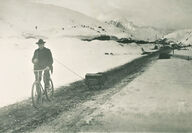
Over a century ago, a gold rush pioneer set out on an incredible journey of more than one thousand miles across the breadth of Alaska upon his two-wheeled iron steed, braving the brutal winter weather and untamed wilds in search of fortune. This is the story of Edward Jesson, who biked from Dawson City to Nome in the year 1900, a journey, all thought, he would never return from. Before the Alaska gold rush era, the world-wide bicycle craze of the 1890s was in full swing, with... Full story
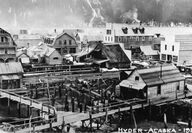
Resting on the eastern fringe of the Misty Fjords National Monument, at the head of Portland Canal, the Southeast Alaska mining town of Hyder survives through a symbiotic relationship with Stewart, a British Columbia mining town that lies just two miles (3.2 kilometers) to the east. Persisting for over a century as a town that identifies more closely with its Canadian neighbor than distant Alaska towns, Hyder found its lifeline being nearly cut off by the coronavirus... Full story